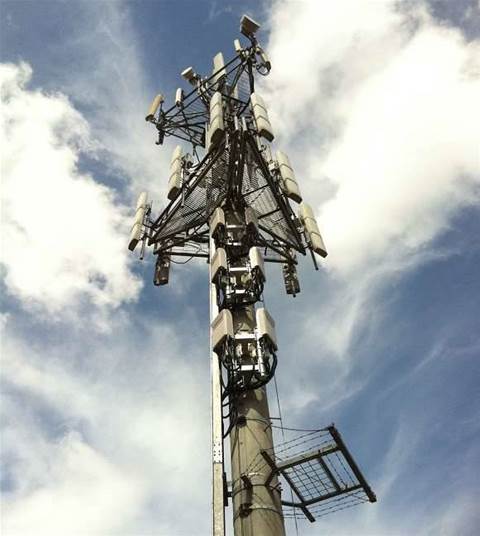Telstra has unveiled plans to speed up its migration to Long Term Evolution (LTE) mobile broadband technology, investing a total $1.2 billion and upgrading between 1000 and 1500 mobile base stations over the next 12 months.
CEO David Thodey told media and analysts at the company's full financial year results briefing that the telco would look to invest a further $500 million in capital expenditure over two years on expanded works for its efforts in the National Broadband Network, and its mobile network.
The majority of the extra investment, which chief financial officer Andrew Penn attributed to a "strong capital position", would be focused on the mobile network.
It would see the company invest significantly more than the $700-800 million it traditionally spends each year on the Next G network, which has faced significant demand but quality degradation over recent months.
The upgrades would focus largely on LTE which, since launch in September last year, has reached 1000 base stations in five-kilometre swathes around major cities and metropolitan areas, as well as regional centres.
Thodey revealed a total of 375,000 customers had bought LTE devices in the 11 months since launch, the majority of which were on either USB or wi-fi modems rather than the two 4G-capable handsets the telco currently sells.
Though Telstra has remained alone in the Australian LTE market for some time, Optus last month opened its competing network for the first time in Sydney and Perth, and Vodafone has indicated intentions to do the same sometime next year.
"Because we're seeing such good take-up and it's just a really good financial proposition, we're just saying, 'Hey it's better to bring some capital forward'," Thodey said.
"It's an accelerated build of our LTE capability ... you'll see an expansion out of the outer metro areas and a large number of other towns across the country."
The move comes as the nation's largest telco continued to experience significant growth in mobile customers.
Telstra reported 1.6 million new domestic mobile customers across the past 12 months, reaching a total of 13.8 million. The growth was slightly slowed, after the telco recorded two million new mobile customers across the 2011 financial year.
Of the new customers this year, mobile broadband customers accounted for 3.1 million users.
The move to further upgrade base stations to become LTE-capable would allow the telco to alleviate some of the stress on its network from greater customer volume, while driving down the costs of transmitting data over the network.
Thodey said the telco's LTE network took approximately half of the operational expenditure required when compared to its existing 3G network.
"The ARPUs [average revenue per user] are a little bit higher [on LTE] but the costs are a lot lower," he said.
"It's very early days. People who adopt early tend to be the higher ARPU users anyway. We're a little bit reticent to put out too much data until we get to a million [subscribers] or so, but it's encouraging."
The telco boosted its capital expenditure-to-sales ratio from the usual 14 percent to 15 percent for the 2013 financial year. The ratio would settle back down to 14 percent in coming years, Penn said.
The telco reported a capital expenditure of $3.59 billion across the financial year, due largely to mobile and ADSL2+ investments.
NBN expansion
Though most of the additional CapEx would be focused on mobile, Thodey said the company would also look to accelerate its efforts with NBN Co, spending the remainder of the $500 million on remediating pits, Telstra's dark fibre network and the exchange spaces intended for use as points of interconnect on the NBN.
The company has handed the first package of the agreed transit network over to NBN Co while Thodey said initial plans to complete the transition over three years would likely occur in two instead.
NBN Co this week said it would use more Telstra infrastructure than initially intended in the build of the network, including dark fibre and exchange space, as it looks to speed up building the foundations of the NBN network.
Greater use of Telstra assets contributed to a $3.2 billion increase in operational expenditure over the life of the network build for NBN Co, but would help lower the CapEx overall, it said.




_(11).jpg&h=142&w=230&c=1&s=1)







.jpg&w=100&c=1&s=0)
_(8).jpg&w=100&c=1&s=0)









